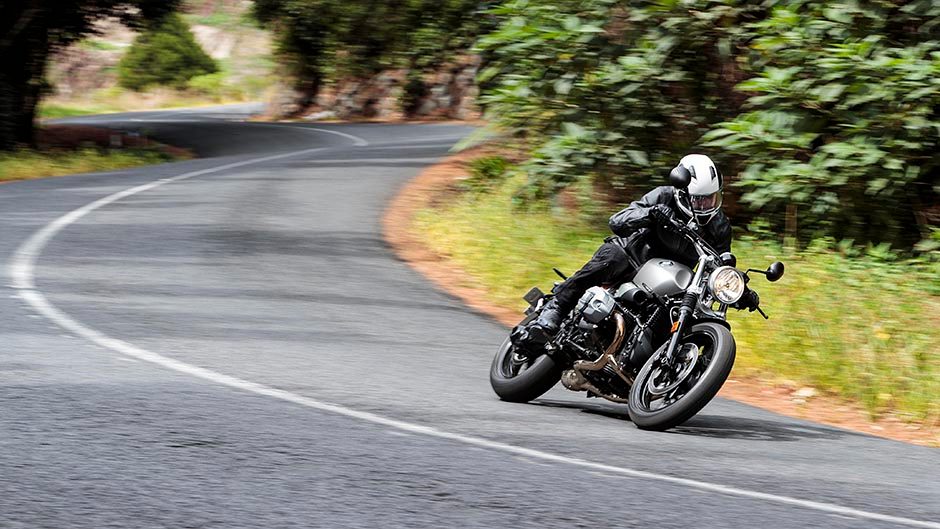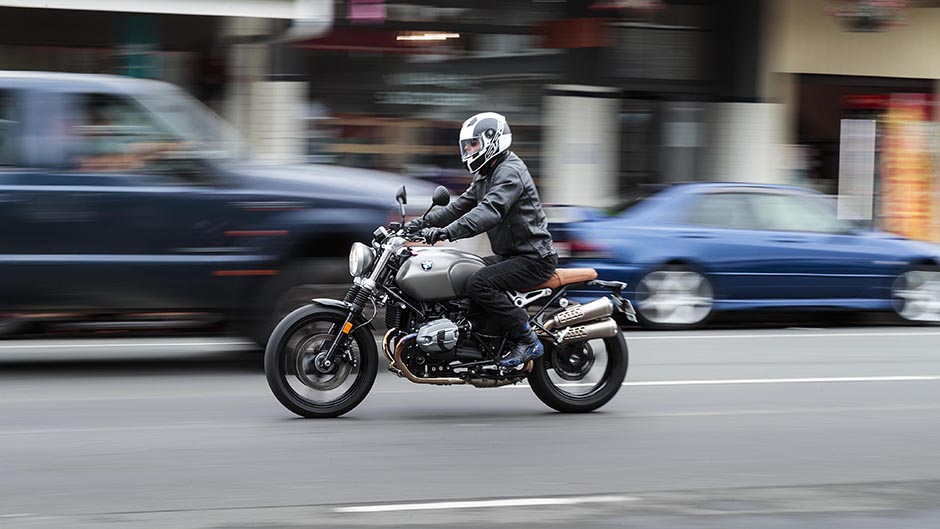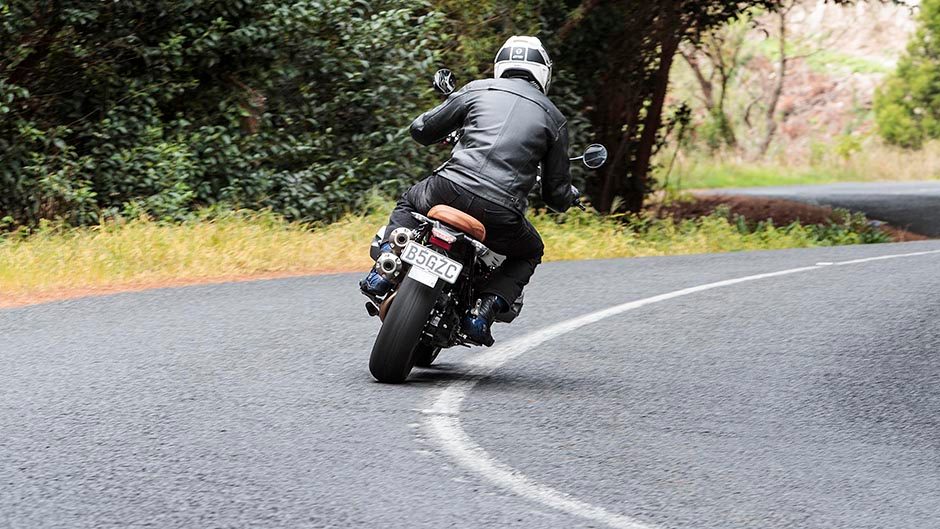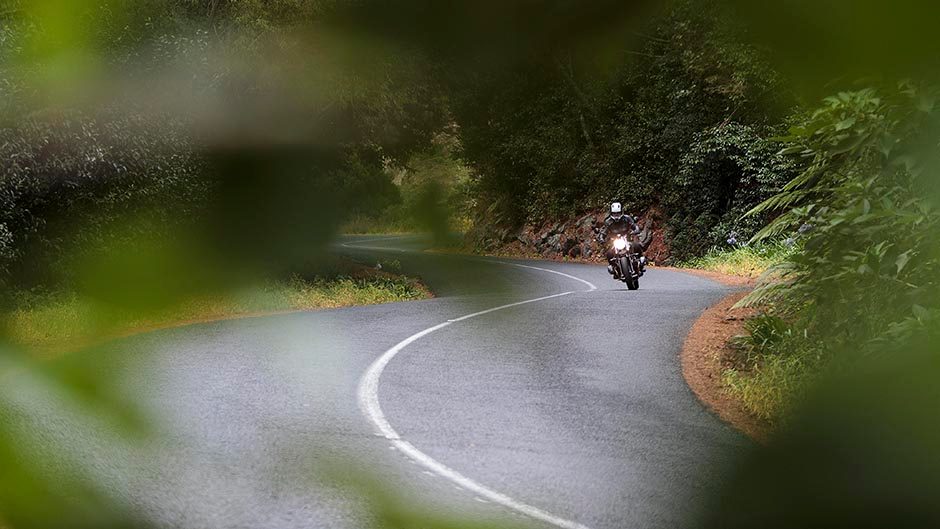Exactly what is a Scrambler, given we’re hearing more about these versatile devices? No, not the ones that mess with signals, the two-wheeled ones that mess with trails and tracks. Think Scrambler and most middle-aged folk will recall stripped back off-road bikes in the the fifties and sixties, a time when Steve McQueen made a Triumph T60 famous in “The Great Escape”. The machine was later modified for desert racing in the US.
The Scrambler concept evidently began earlier than this, back in the 20s, when people would hot up and lighten standard bikes to make them ready for all-terrain race duties; dirt bikes didn’t arrive until the sixties. Typically Scramblers had everything surplus to needs removed, decent torque rather than raw power, lightweight components and small tanks, a thinner padded seat, a high-mount exhaust, minimal instrumentation and headlight, and chunky tyres for grip on dicey surfaces. They generally also had lightweight spoked wheels.
Nowadays, many of the so-called Scramblers don’t really follow the original guidelines that closely; the appearance is enough. For instance, it wasn’t until the recent release of the Desert Sled that any of the Ducati Scramblers had suspension offering proper ground clearance or the ability to jump objects like barbed wire fences.

The latest bike to join the would-be off-road set is BMW’s R nineT Scrambler, based on the original R nineT, known as the Roadster overseas. This is not really a Scrambler in the strictest sense of the word, though that doesn’t mean it’s not worthy as a mount ready for a multitude of duties. So it has a lone instrument, small headlight and thin padded seat, along with raised stacked exhausts but the standard tyres could be mistaken for something off a street bike, rather than for trail work. That said, knobblies and spoked wheels are an option. Nor does its ‘elongated’ suspension work much differently from that on the original R nineT, with just a few mm extra travel up front and only a handful more at the rear.
BMW has set up the second member of the R nineT family to be less expensive than the Roadster. For it no longer has fully adjustable suspension – the forks aren’t changeable in any way. They aren’t inverted either, though they now have protective rubber gaiters for that authentic dirt-excluding look. Only preload can be changed at the rear and not with a handwheel, like on the Roadster. Brembo brakes are no longer radial-mount items, and the chassis set-up is also different, with two extra degrees of fork rake. Oddly, Scrambler features traction control as standard, whereas the Roadster misses out. Should you plan taking it offroad, both ABS and TC are switchable.
To behold, this is every bit as alluring as the Roadster, its high-mount stacked Akrapovic pipes looking great and barking the part, the lone instrument tiny and with little in the way of useful trip data. The abbreviated seat looks fine in brown leather, contrasting surprisingly well with the matte grey paint. It’s comfy enough too at least for relatively short hops. The 17L tank permits stints that might have you squirming though.

Swing a leg over, and it feels about the same weight as the Roadster and so it proved, at 220kg. With wide handlebars, and plenty of steering lock, it’s a handy bike to manoeuvre, and you’ll soon be acing feet-up U-turns.
Gearing is also shorter, and while there’s no real way of confirming that given the absence of a rev counter, it does sound just a bit busier at 100 than the Roadster, but cruises happily at pretty much any speed. We sensed a bit more vibration than with the R nineT too, mirror images not quite so revealing. With shorter gearing, the Scrambler’s a tad quicker than the Roadster at the top end.
It also felt a bit faster during acceleration tests, and so it proved when we attached the GPS data logger, producing a barely quicker sprint time of 3.52sec (vs 3.56sec) but a slightly better overtake 80-120km/h of 1.73sec versus 1.87sec. Not much difference, granted, but the way it pulls away in top gear from as low as 40km/h seemed just a bit more spirited to us.

The transmission is also noteworthy, the short travel of the lever between gear shifts and likely the shaft drive helping to keep changes smooth in either direction. What’s not a surprise, given the rubber, is just how exceedingly well this goes on road. We’ve never ridden a Scrambler that we just wanted to deck all day long but we did with this. The tyres are the major difference; Michelin Pilot Road Tech Trials. They look a bit like a rain tyre for the track, and absolutely nothing like a knobbly. But they do allow serious lean angles and with the slight extra ride height and the minimalist pegs, it’s harder to touch anything down when going hard on this than with the Roadster; we tried but no cigar.
With the extra couple of degrees of rake, there’s a sense of added stability in corners, without any great loss of agility. So it might not steer quite as quickly as the R nineT but with the wider bars it’s not so as you’d notice. After a short while there’s just the immense feeling of confidence in the chassis, as with the Roadster.
But the more basic suspension (and thinner seat) affects ride quality. The Roadster is always comfortable, and easier to set up just how you’d like it, whereas there’s much less adjustability with the Scrambler. And you do notice the reduced ability to absorb big hits, despite slightly greater wheel travel. The thinner seat padding demands more frequent stops too, but the riding position is, once again, about as good as it gets for a naked bike. Pegs positioned just so, bars relatively low, you naturally push forward slightly to counter the wind blast, so there’s not too much weight on the seat, and on a bright still day there’s nothing quite like taking a spin on a sorted standard.

What about the brake downgrade – do you miss the radial-mount Brembos? Well the numbers would suggest yes; we couldn’t break 40m in a full-on ABS stop from 100km/h, likely a combination of both tyre and brake changes. And while you’d never describe the Scrambler as being underbraked, there’s definitely not as much in the way of sheer bite up front. You need to work the adjustable lever harder too. However, when upright you can grab just as much brake lever as you can possibly muster, like before.
One of the things we missed was the absent rev counter; it’s not really needed because this pulls so well, so cleanly from low revs – the motor and transmission are the same as the Roadster’s. But we missed the added trip data, like fuel use, distance to empty, and gear position.
Now to the not-so-great news. Because it comes standard with TC and stuff like heated grips the saving compared with the Roadster is only $2000, $23,990 versus $25,990. Given the Scrambler’s modest off-road ability as is, we’d say spending the extra on the Roadster with its superior components and more comprehensive instrumentation is worthwhile. Had it not had TC and cost $22k, then it might have made more sense. If you prefer the styling of the Scrambler, and really want TC, then feel confident in the knowledge that it behaves in much the same manner as the original R nineT. To behold and ride, both are sublime.
| Model | BMW R nineT Scrambler | Price | $23,990 |
| Engine | 1170cc, air/oil-cooled, fuel injected, flat-twin, 83kW/116Nm | Drivetrain | 6-speed, shaft drive |
| 0-100km/h | 3.52sec | 100-0km/h | 40.42m |
| 80-120km/h | 1.73sec (49.65m) | Weight | 222kg |


